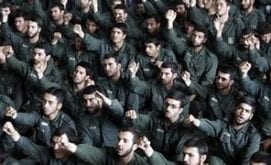iranintl – The price of lamb in Iran has increased by around 60% in the past 12 months as basic food items continue to become beyond the reach of the average family.
According to Dideban-e Iran news website, the price per kilo has doubled in the last year to 6,200,000 rials ($11). Afshin Sadr-Dadras, the CEO of Iran’s Central Union of Livestock, announced in June that the country’s demand for red meat has halved as per capita consumption of the item has alarmingly decreased in just two or three years from 12 kg to 6 or 7 kg.
Amid the economic crisis, many Iranians had recently begun to replace red meat with poultry, as families struggle with even the most basic food items, but even poultry has now become inaccessible to many.
On Thursday, Ali Ebrahimi, the CEO of the National Union of Poultry Producers, said that poultry production has overtaken consumption over the past two months, resulting in a surplus of supply over demand and lowering the price of the commodity.
The decline in price has hurt poultry farmers who are set to export 5,000 tons of poultry to Iraq in the next eight days, he stated.
Reports received earlier in March by Iran International indicate a significant drop in people’s purchasing power and the elimination of many food items in their diets, including red meat, chicken, and fish, one third of the country now living below the poverty line.
According to the conservative Khorasan newspaper, the prices of various legumes, an important item in the Iranian diet, have increased by 30 percent and rice, also a staple, by 10 percent.
The sharp rise in inflation in Iran has not just affected the food market. According to Iran’s leading economic daily Donyaye Eqtesad (World of Economy), rent prices in the country in April 2024 rose by around 42 percent compared to the same period last year.
Meanwhile, a real estate expert told Etemad daily that another increase of 40 percent or even more in rent prices is likely to occur in the next two months. Referring to the steady rise in Iran’s inflation rate, Abbas Akbarpour, Secretary of the Iranian Association of Road and Construction Engineers, remarked that landlords try to “preserve their capital” by determining the rent higher than the inflation rate and this means that rent prices are expected to increase even more.
The uncertainty in the economy and the continued depreciation of the national currency have led property owners to try to partially cover the effects of inflation in the next months, Akbarpour went on to say.
In more than a decade, Iran’s economic growth has averaged zero. The situation has been further exacerbated since the US withdrawal from the JCPOA nuclear deal in 2018. Over the past six years, the rial, Iran’s national currency, has fallen 15-fold, fueling inflation and plunging millions of citizens into poverty.
An analysis of posts on Persian social media in March indicated that fast-growing residential rents have turned into one of the most serious economic concerns among Iranians.
After enduring a more than 40 percent annual inflation rate for the past five years and seeing their purchasing power slashed to a fraction of what it was in 2018, Iranians now have to struggle with rising rents that are surpassing the monthly salary of an ordinary employee.
In recent days, an increasing number of Iranian politicians, media outlets, and senior clerics have voiced criticism of the government’s handling of the country’s worsening economic crisis.
 Shabtabnews In this dark night, I have lost my way – Arise from a corner, oh you the star of guidance.
Shabtabnews In this dark night, I have lost my way – Arise from a corner, oh you the star of guidance.



